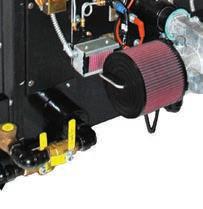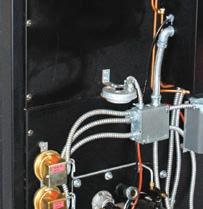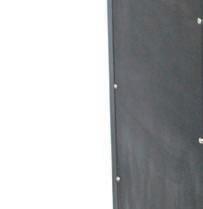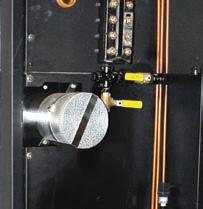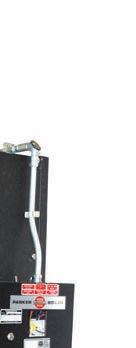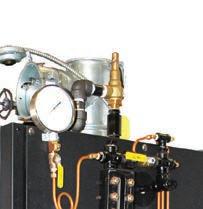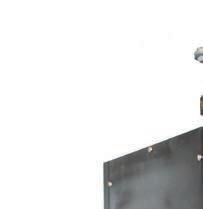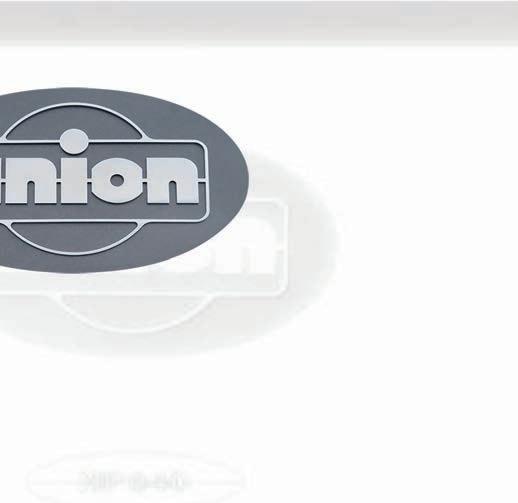
























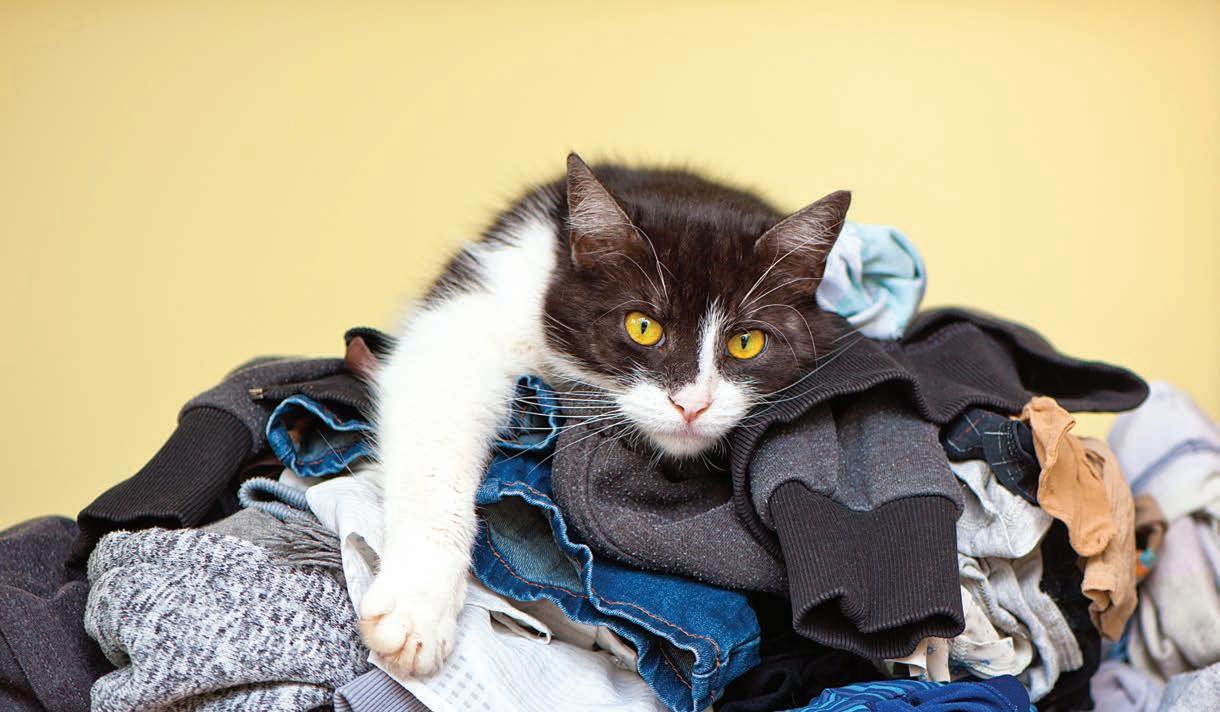































White Conveyors’ OAS is the perfect solution to expand your existing business, improve customer service and increase profits. Order Assembly couldn’t be easier.
The OAS significantly increasing productivity with a single operator. That means a safer workplace, helping employees observe social distancing. What’s more, order accuracy is optimized, and employee morale is improved as fatigue is virtually eliminated.
And if that were not enough, labor savings combined with increased productivity typically results in a return on investment in less than one year.*
The system can be delivered and operational the same day. As an option, it can be mounted on wheels for mobility or storage. Isn’t it time to increase productivity with less labor while increasing workplace safety? White
Easy to Use clear and easy-to-read color touch screen, plus audible instructions
Increase Productivity with Reduced Labor Force capable of assembling over 2000 garments per shift with one operator

Fast Return on Investment typical ROI in less than 1 year*
More Capacity standard 5 slots per foot have 50-80% more hanger capacity than competitors, reducing the need to split large orders
Flexible software customization is available for specialized customer’s requirements


Highly Accurate and Reliable greatly reduces the chance for human errors
Reliable, Robust and Durable Construction with average operational lifespan of 25+ years
USA Based Manufacturer for over 75 Years remote diagnostics, setting adjustments and troubleshooting assistance reduces downtime, and minimizes the need for an on-site service technician

* ROI is based on the Bureau of Labor Statistics
Nov./Dec. 2020
Vol. 87, No. 8


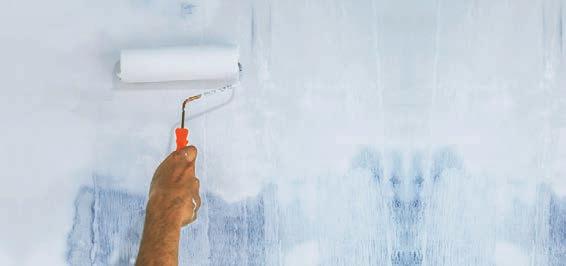
Investing in machinery and training your staff to give customers a superior experience is vital to your business, but never overlook the importance of curb appeal. An attractive exterior makes a dynamic first impression on potential customers and provides you with a powerful marketing tool. We’ve spoken with cleaners to see how they use their curb appeal to turn heads.
Dave Davis, EditorThere’s a reason why one of the primary rules of real estate is “Location, location, location.” The decision of where to place a drycleaning store or plant can affect every facet of the business. We’ve visited dry cleaners of varying vintages — including one that opened this year and another that opened in 1917 — to ask them about their thought process on choosing a location and making sure their existing sites are still working for them.
Dave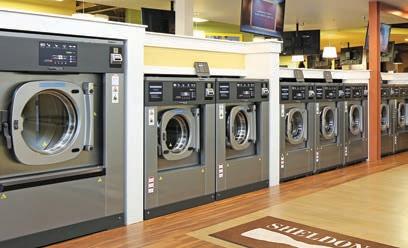
The economic downturn has driven many dry cleaners to reassess their business and look for new ways to make up for lost revenue. Some cleaners are expanding into the world of vended laundries to achieve this goal. By offering customers the option of doing their laundry in the same facility that offers dry cleaning, they have more options — and owners have more opportunities to create crossover business.
Jorgensen Editor
Editor
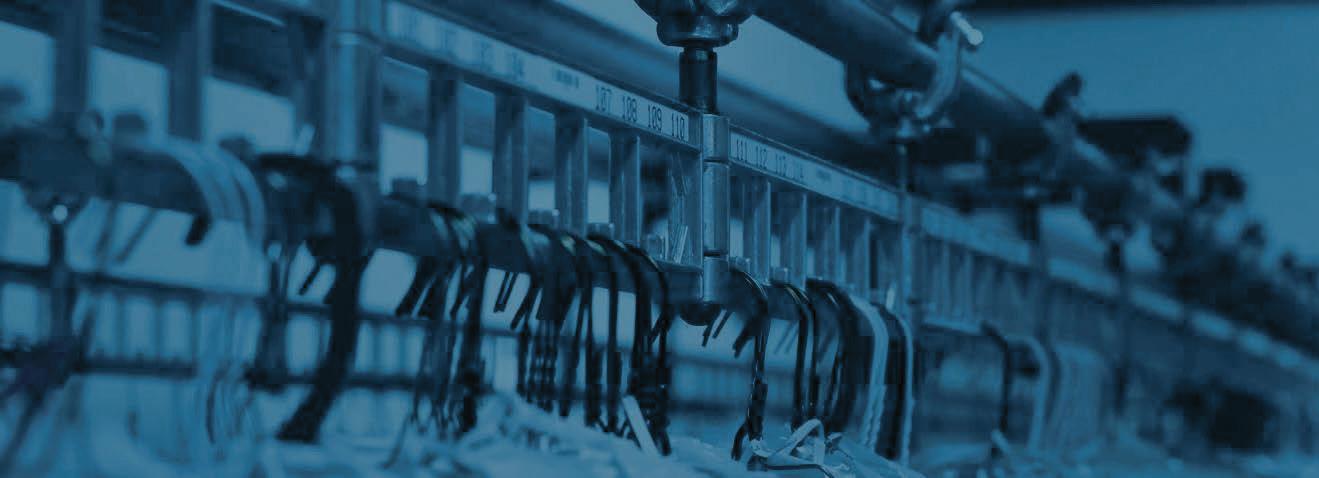


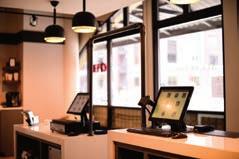

Hello! My name is Dave Davis, and I’d like to take this opportunity to introduce myself as the new editor of American Drycleaner
There’s a weight of responsibility that comes with taking the reins of an 86-year-old publication, and it’s one I take seriously — and happily accept. The only periodicals to reach that age are the ones that have faithfully and continuously served their readerships over the decades. American Drycleaner was launched in the depths of the Great Depression, and today’s cleaners are now facing a crisis of their own. This magazine is here for you now, just as it has been through every challenge since 1934.
My goal is to make sure there’s information in each issue — as well as in the American Drycleaner podcasts and online efforts — that you can put to use to build your business, serve your customers and make an impact in your community. By sharing ideas and highlighting new developments, we’re better able to withstand downturns and take advantage of opportunities.
The features in this issue of American Drycleaner are perfect examples of this mindset.
In the first feature in this issue, “Cleaning Up Your Curb Appeal,” we’ve asked dry cleaners in diverse locations about the importance of maintaining clean, attractive appearances in order to attract customers and keep them for the long haul.
The next feature, “The Whys of Where,” explores the importance of finding the right locations for your stores and plants, as well as evaluating your existing spaces to make sure they’re still the right fit for your business.
The final feature, “Vended Laundries: Why Dry Cleaners Want One,” examines how diversification into other areas of fabricare can build a business even in times of economic downturn.
I’m looking forward to getting to know you and guiding this publication in serving our readership, just as we have for the past 86 years. Please feel free to contact me at ddavis@atmags.com with ideas, tips, concerns or other items that could be of benefit to you and your colleagues. We’re stronger together! ADC
American Drycleaner (ISSN 0002-8258) is published monthly except Nov/Dec combined. Subscription prices, payment in advance: U.S., 1 year $46.00; 2 years $92.00. Foreign, 1 year $109.00; 2 years $218.00. Single copies $9.00 for U.S., $18.00 for all other countries. Published by American Trade Magazines LLC, 650 West Lake Street, Suite 320, Chicago, IL 60661. Periodicals postage paid at Chicago, IL and at additional mailing offices.
POSTMASTER, Send changes of address and form 3579 to American Drycleaner, Subscription Dept., 440 Quadrangle Drive, Suite E, Bolingbrook, IL 60440. Volume 87, number 8. Editorial, executive and advertising offices are at 650 West Lake Street, Suite 320, Chicago, IL 60661. Charles Thompson, President and Publisher. American Drycleaner is distributed selectively to: qualified dry cleaning plants and distributors in the United States. The publisher reserves the right to reject any advertising for any reason.
© Copyright AMERICAN TRADE MAGAZINES LLC, 2020. Printed in U.S.A. No part of this publication may be transmitted or reproduced in any form, electronic or mechanical, without written permission from the publisher or his representative. American Drycleaner does not endorse, recommend or guarantee any article, product, service or information found within. Opinions expressed are those of the writers and do not necessarily reflect the views of American Drycleaner or its staff. While precautions have been taken to ensure the accuracy of the magazine’s contents at time of publication, neither the editors, publishers nor its agents can accept responsibility for damages or injury which may arise therefrom.
American Drycleaner, November/December 2020
Publisher
Charles Thompson
312-361-1680 cthompson@ATMags.com
Associate Publisher/ National Sales Director Donald Feinstein 312-361-1682 dfeinstein@ATMags.com
Editorial Director
Bruce Beggs 312-361-1683 bbeggs@ATMags.com
Editor Dave Davis 312-361-1685 ddavis@ATMags.com
Digital Media Director
Nathan Frerichs 312-361-1681 nfrerichs@ATMags.com
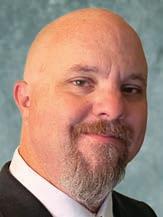
35 Pair Model
• SD-035JS Single Phase 110V
• SD-035JT Three Phase 220V
• Dimensions: 38" x 65"
56
• SD-056J Three Phase 220V


• Dimensions: 38" x 66"
72 Pair Model
• SD-072J Three Phase 220V
• Dimensions: 38" x 79"
• Easy to dry, put the individual shoes and or accessories on the arms and walk away.

• Short drying time with strong air flow. No heat = no shrinkage.
• Dry up to 35, 56 or even 72 pairs of shoes at a time.
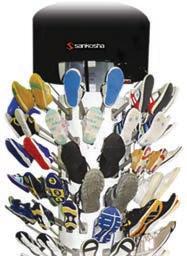
• Compact design, 40-inch diameter footprint saves space. Easy installation.


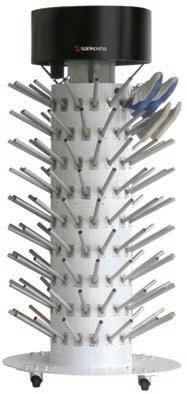
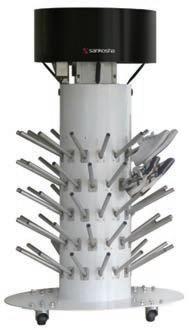
• Portable, can be moved easily with large caster base.
1901 Landmeier Rd., Elk Grove Village, IL 60007
TOLL FREE: (888) 427-9120 • TEL: (847) 427-9120 • FAX: (847) 427-9634 http://www.sankosha-inc.com
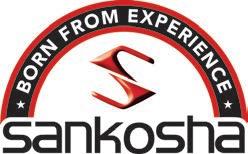



The first impression many potential consumers will have of your company won’t come from your on line marketing, social media, advertising or other outreach efforts.
No, these customers will decide whether to trust you or not largely based on your store’s physical appearance. We’re cautioned not to judge books by their covers, but customers will absolutely judge a business based on its curb appeal.
Charlie Jones, the owner of 24/7 Dry Cleaners of Frisco, Texas, understands how important the issue of curb appeal is for his store.


“Anytime you hire a real estate agent to sell your house, the first thing that they advise the seller to do is to im prove the curb appeal,” he says. “Why? Well, to attract more buyers and to get a higher price, of course. This idea should be applied to our businesses 365 days a year.”
Jones, who has been in the cleaning business for 26 years and ran franchise plants until opening his own store in 2016, believes that the external condition of a business communi cates many messages to customers who need its services.
“The appearance of your business is the only thing that advertises who you are and what you offer 24 hours a day,” he says. “A clean, well-lit and well-maintained store tells the world what kind of operator you are. It offers both your current and potential customers a glimpse into the quality of the service you offer.”
Since customers are trusting dry cleaners with their own outer appearance, they have every right to take notice of the care cleaners take of their store. “Everyone knows the value and importance of a first impression in our personal lives,” Jones says. “The same is true for our stores. A cus tomer is much more likely to visit a business for the first time when they deem it attractive and orderly.”

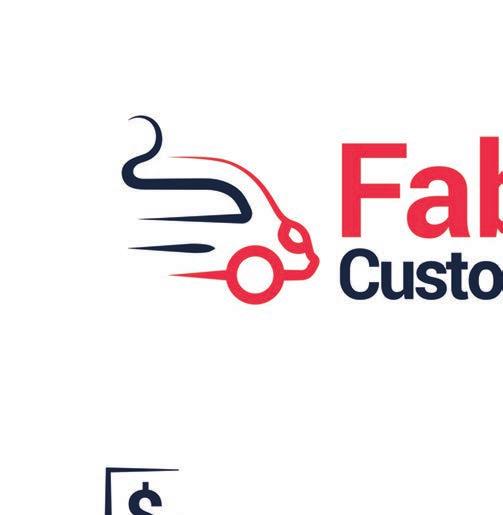



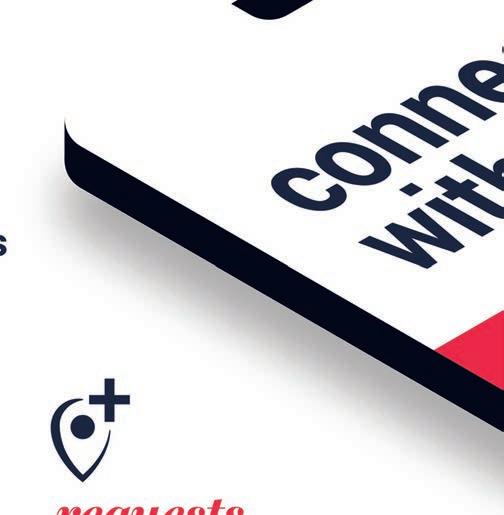

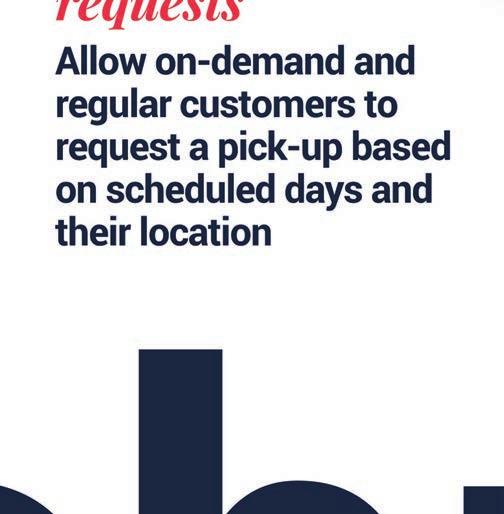

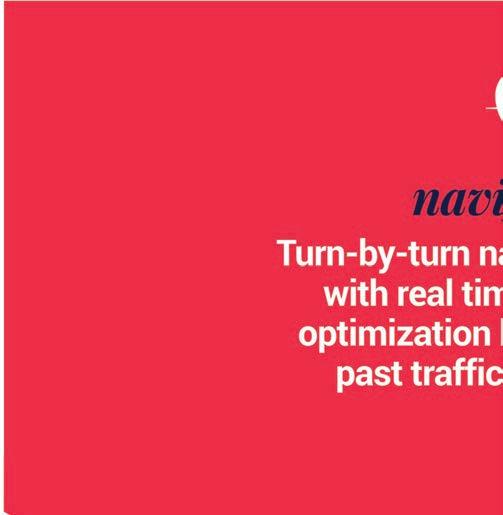
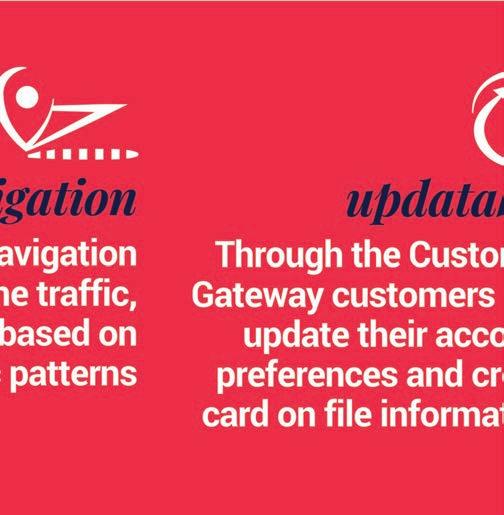

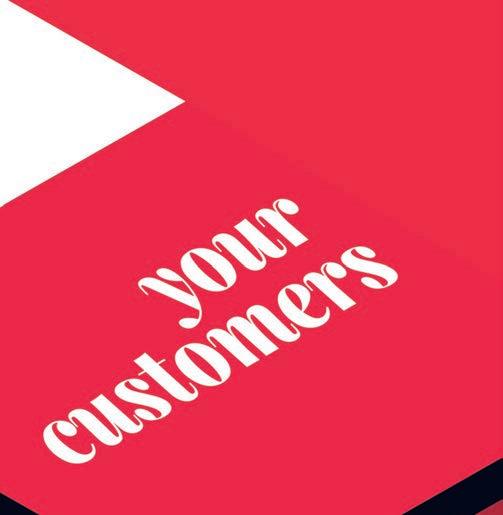



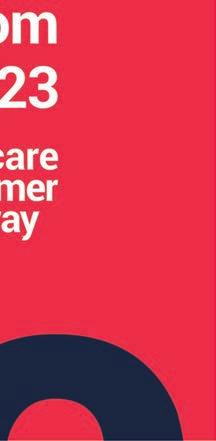
Jones offers drive-thru lanes as well as locker drop-off and pickup. And, as the name suggests, his service never closes. Because he conducts much of his business at night, curb appeal means more than just a nice paint job or neatly trimmed shrubs. Proper lighting provides both visibility for the company and a sense of security for the customer.
“My store has a double lane drive-thru,” Jones says. “It stays lit from sundown to sunrise. I want every person driving by to see that we offer the convenience of drivethru service. I also have a separate room attached to my store, which is lined with lockers. This area not only has an LED sign designating it as our locker room, but the room also stays lit 24 hours a day. I want my customers to feel totally safe when they use it after hours.”
Jones also knows that if customers get a favorable at titude about his store, they’re more liable to take a closer look — something he uses to his advantage.
“My call office never remains completely dark after busi ness hours,” he says. “We run a video in our lobby featuring the services we offer on a constant loop that is visible from the street. I also want customers who use our night drop to feel the safety that comes from a well-lit store.”
The most visible aspect for many companies is the sign on the front. This design element is the introduction that a cleaner can make to those passing by. Those who pay special attention to the visibility and attractiveness of this vital element of their marketing can set themselves apart from the competition.
For Diamond Laundry and Cleaners in San Jose, Cali fornia, the billboard on the business’s property attracts customer attention, just as it has for decades.
“We’ve had offers from the beginning of the business to buy space on that billboard,” says Jason Burton, who now operates the family-owned company, “but it’s always been refused.”
Diamond Laundry, started in 1931 by Burton’s grand parents, is located at an entryway to downtown San Jose, and the wooden billboard is a landmark for locals. “It’s important in that sense,” Burton says. “There’s a history here.”
The board, featuring a character named “Miss Careful” — based on Burton’s grandmother — has been updated and refreshed throughout its existence. Still, time had caught up to it over the past 20 years, nearly putting an end to the iconic sign.
“The artist who touched it up, and did the majority of the San Jose billboards, passed away while updating our billboard and didn’t get to finish it,” Burton says. “My
grandma refused to let anyone else touch it up or redo it.”
However, earlier this year, 97-year-old Mary Jane Burton relented and allowed another artist to renovate the sign.
“We got it restored almost exactly how it was, with only minor updates,” he says. “That sign is important because it’s been there so long. It can’t go down.”
While Diamond’s billboard is a classic take on store front signage, most cleaners use illuminated signs to gain their customers’ attention. These signs used to be neon or lit by fluorescent tubes, but recent advances in LED tech nology have given store owners more options than ever in this crucial area.
“I believe that when it comes to signage, that bigger is better,” Jones says. “LED signs and lights not only offer a tremendous reduction in energy consumption — thus making it cheap to advertise — but they also offer a better and brighter quality of light.”
Also, because LEDs don’t use tubes, these signs are lighter and thinner, cutting down on installation costs and offering more display options. Add to that the ability to control individual LEDs separately — allowing flashes, fades and other animation options — and it’s easy to see why LED signage is the choice of many retail businesses across the nation.
“They also far outlast conventional lighting,” Jones says. “Signage is a big aspect of curb appeal. Spending more money upfront on LED signs and lights pays longterm dividends.”
This type of signage can be a double-edged sword, how ever, if the company’s owner doesn’t keep up with routine maintenance.
“Nothing detracts from curb appeal and professional

GreenEarth Cleaners are cleaners who care – care about their communities, their customers, their associates, the fabrics they clean, and certainly our environment.




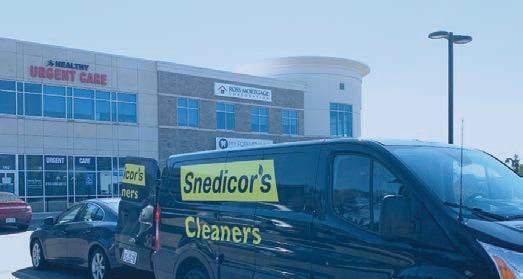



In the difficult times we have been through and that remain ahead, our GreenEarth Cleaners have found ways to help others in their communities while at the same time providing safe and effective environmentally non-toxic professional dry cleaning. One customer and one garment at a time. We salute you and thank you for caring enough to be the best! www.greenearthcleaning.com
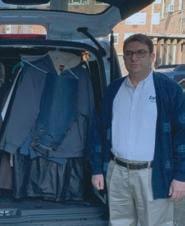

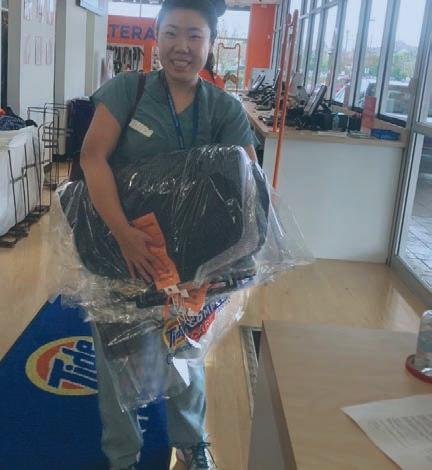
ism faster than burned-out lights and signs,” Jones says. “When a valuable piece of equipment breaks in your store, you move quickly to repair or replace it. The same should hold true of your lighting.”
Jones brought up a cautionary tale he regularly sees on his way home: “There’s a cleaner by my house that has had part of their signage burned out for the past four years,” he says. “It’s usually dark when I pass by it, twice a day, and every time I see ‘Y LEANERS’ spelled out. The ‘DR’ and the ‘C’ are burned out. I’ll bet that the bad curb appeal has cost him an untold amount of money through the years.”
There are times when the store owner doesn’t have total control over the outer appearance of his or her façade.
That’s still no reason to give up on the idea of curb appeal — you just have to work within the system.
Kings Guard Cleaners is located in Haddonfield, New Jersey. “Over the years, we have remodeled,” says Dae Chung who, with wife June, took ownership of the 40-year-old establishment in 2006. “However, in Haddon field, we cannot do outside whatever we want. They want an ‘old’ look — it has to be that way.”
Chung found that zoning laws in the borough state re quire stores in his area to maintain a specific appearance that harmonizes with surrounding businesses. Classic wood and stone storefronts decorate the street, and their clean lines give the district a friendly-but-sophisticated appear ance (“All these designs have to be approved,” Chung says).
Working within these restrictions, however, doesn’t mean that creativity has to go out the window.
“For the inside, we could do anything we wanted,” Chung says, “but we wanted to coordinate our look inside with what our customers see on the outside.” The store’s in terior features wooden counters and accent pieces that are at once both modern and classic. “Everything is new,” Chung says, “but we decided to make it appear old. We’re glad we decided to do this because our customers enjoy it.”
An unscientific American Drycleaner poll taken in 2017 asked the question, “How often do you update your storefront?” Approximately 47% of dry cleaners polled responded “occasionally,” while 18% answered “regu larly” — only 4% responded “never.”
In this time of pandemic and restricted profit margins, many cleaners have decided to make do for now with the elements they have, or have scaled back their efforts.
“There’s a whole list of upgrades and redoing things that are on the list,” Burton says, “but financially, right now it’s a matter of picking one thing at a time and doing the most you can yourself to save money.”
This doesn’t mean that his company is sitting still, but the elements of maintaining and improving curb appeal have to be prioritized.
“Paint is on there, and we recently re-did the front office,” Burton says. “But it’s doing one job at a time, and doing most of it yourself. We’re not going to take a big loan out and revamp the whole place. That’s something that I wish we could do, but it’s not in the cards at the moment.”
There are times when zoning laws limit the choices owners have in designing the appearance of their store. Kings Guard Cleaners in Haddonfield, New Jersey, had to conform to the neighborhood rules. However, owners Dae and June Chung still had a few options and complete control over the interior (above), which they designed in a classic style to match their store’s exterior. (Photo:
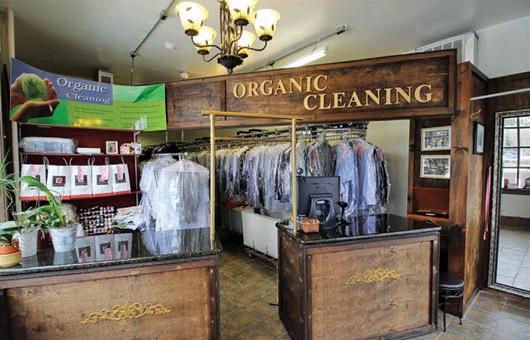
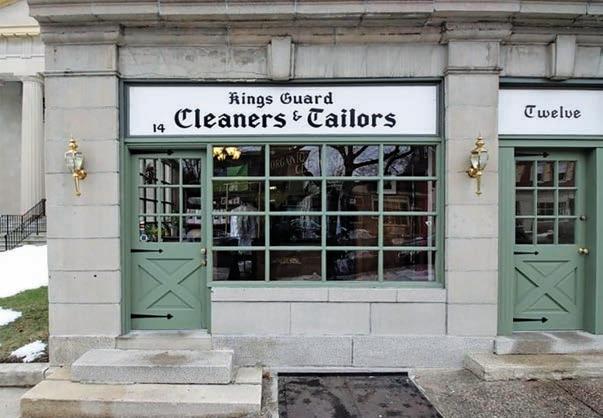
While long-term revamping isn’t on the schedule, Burton believes that the outside appearance of a business should never be overlooked or pushed into the background.
“The outside represents the customer’s first impression,” he says. “The importance of it could mean losing a customer right from the beginning or keeping a customer forever.”
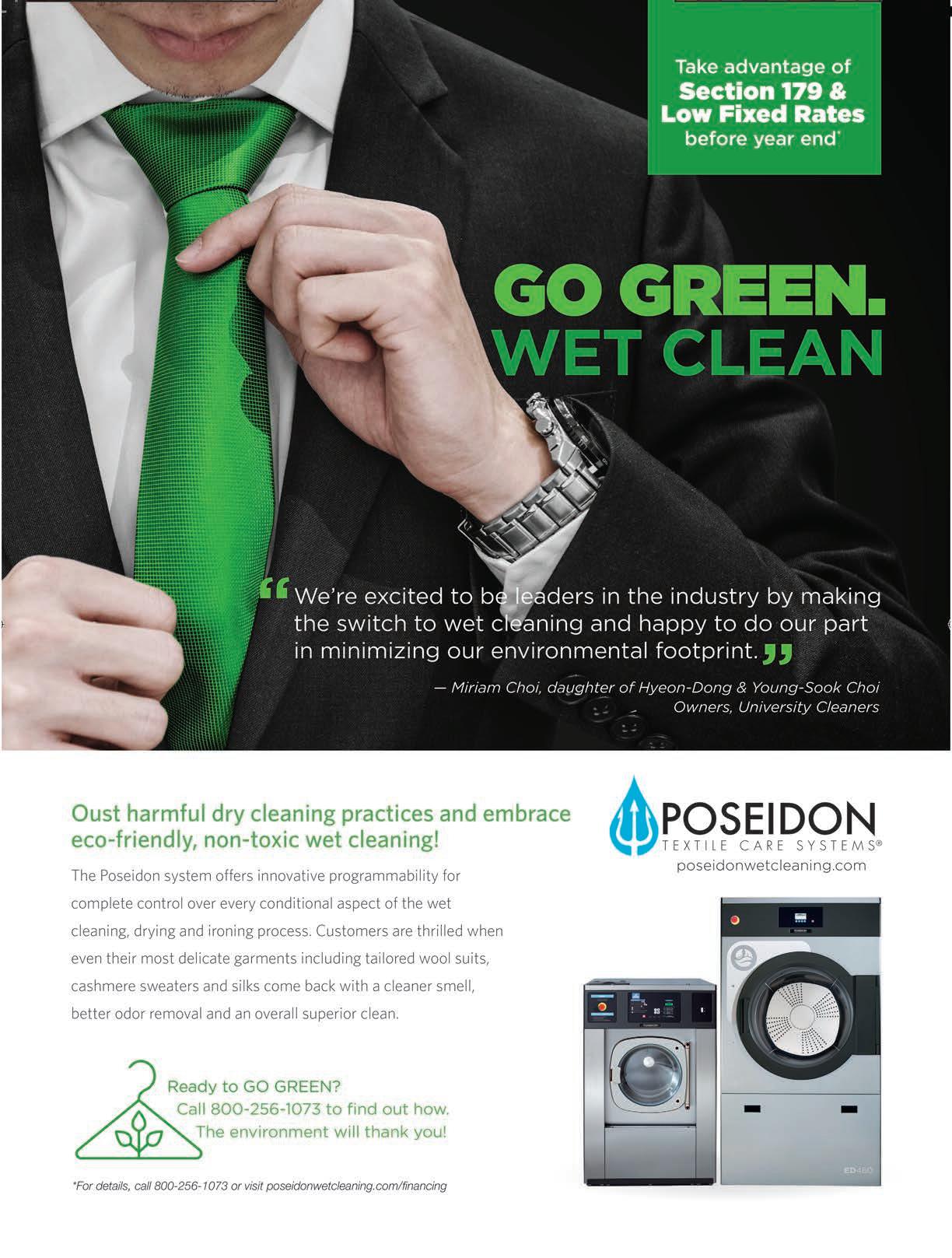
There’s an adage that says, “The best place to fish is where the fish are,” meaning that picking the best location is one of the most critical decisions you can make before casting your first line.
This thought process of selecting the right spot is also valid in the world of service and retail business. Several factors go into finding that perfect location for a drycleaning establishment — and successful cleaners take the time to find the place that best suits their business needs, rather than settling for the first available opening.
“Location was our No. 1 challenge, of course,” says Paul Zeck, owner of Andy’s Cleaners, located in Oak Ridge North, Texas, a half-hour north of Houston. The company’s first plant — a 5,000-square-foot structure — opened this year. “In our case, we wanted to be close to home, on a major thoroughfare and have dependable utility service. These items, along with having a spot that would allow us to have a drive-thru service, were all issues that, for us, were non-negotiable.”
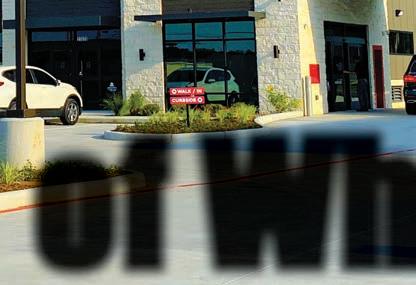

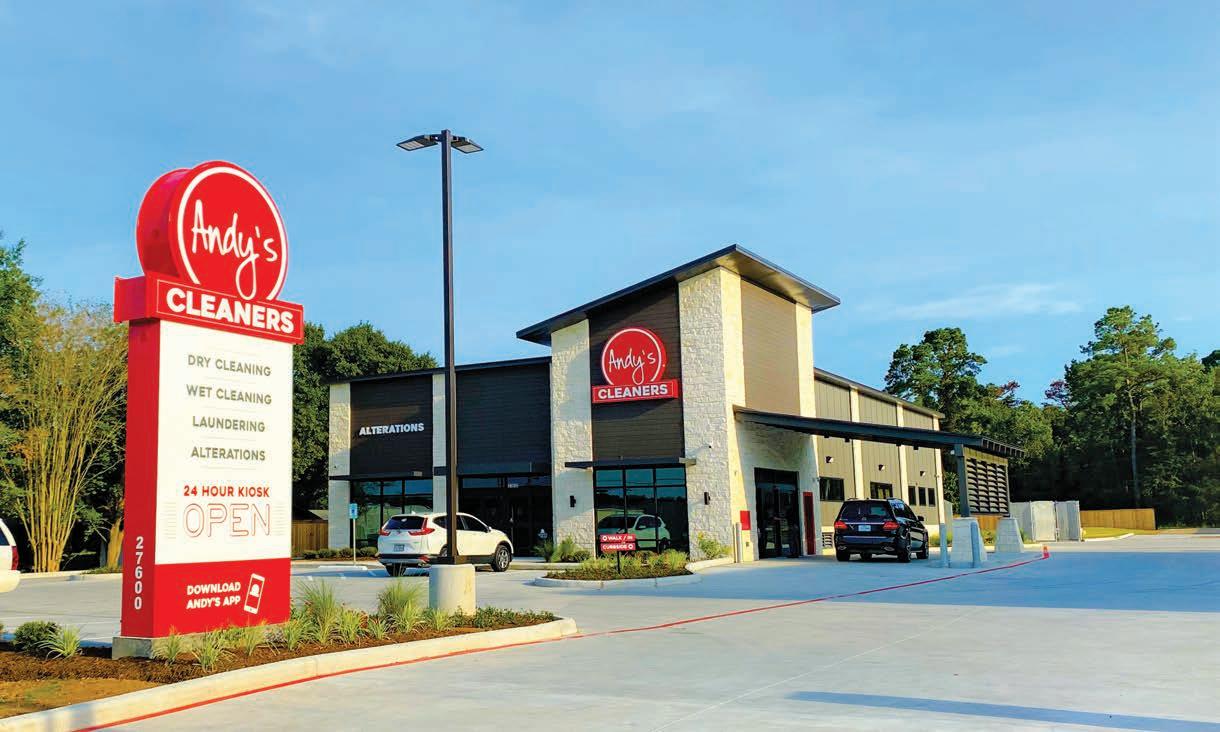
The process of finding a plot to build upon turned out to be much more complicated than Zeck first anticipated.
“Over the course of the year, I got very well acquainted
Paul Zeck, owner of Andy’s Cleaners in Oak Ridge North, Texas (shown above), had a list of things he wanted at the location he selected for his new business. “We wanted to be close to home, on a major thoroughfare and have dependable utility service,” he says. While he had to jump through some annexation hoops, Zeck found a 1.4-acre tract perfect for his plant. (Photo: Andy’s Cleaners)
with my commercial real estate agent,” he says. “We looked at possible sites and contacted many owners inquiring about their interest in selling. Finally, in August of 2019, we closed on a 1.4-acre tract. It was our first choice for a long time, but it seemed it would never happen. The owner was very reluctant but finally came around.”
The land Zeck found checked all the boxes he had set out for himself. In addition to having the proper utilities, his plant and storefront are located on a major east/west commuter road into The Woodlands, a master-planned community in the Houston metropolitan area.

To get his business up and running, however, Zeck had to navigate some legal challenges.
“Our new location had to be annexed into a small city



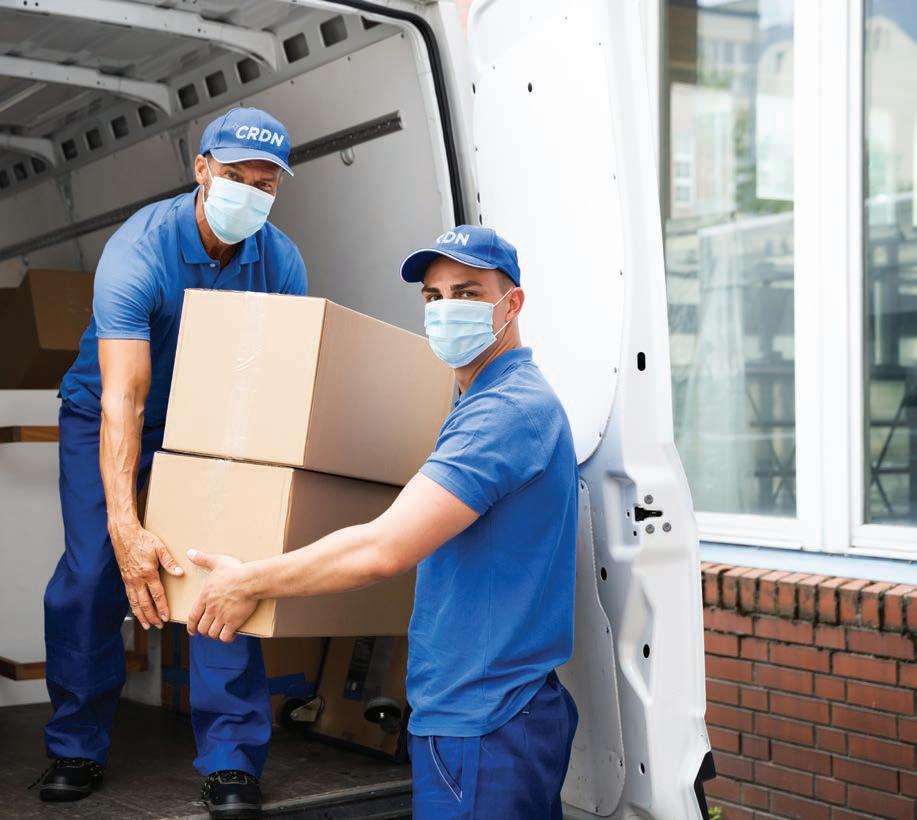
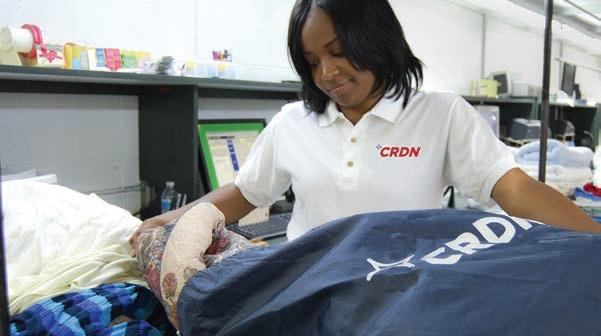
of 2,500,” he says. “Oak Ridge North has a great water source, good sewage treatment, natural gas and everything else we needed, and the City Council was excited to have us. The process of annexing, however, was a study in patience. It took almost four months before we could break ground — but we knew it would happen.”
Of course, building a new structure isn’t the only way to open a cleaning business. Finding the right fit within existing retail space requires careful study of the area and the surrounding customer base. Linda Mitchell, the owner of Trinity Dry Cleaners in Lawrenceville, Indiana, has opened two locations for her business, and she’s had the same strategy for both storefronts.

“When I opened my first store and plant in 2014, and again when I opened the drop store in 2016, I looked for locations that are close to a major grocery store, in my case Kroger,” she says. “My thought process is that most consumers are visiting that store weekly, so my exposure would be greatest near them.”
Mitchell has found success in locating her business in strip-mall facilities, but she had a plan in mind when it came time to make the final selection. “I like to get corner properties,” she says, “so both of my locations are near Kroger and are in the end positions of strip malls.”
While new businesses must make all their decisions upfront, older, established companies can make choices
as they go, examining their changing customer base, economic conditions, area growth patterns and a host of other factors. Locations that made sense earlier can become stagnant, while spots that were once “out in the boondocks” are suddenly developed into desirable areas with upwardly mobile clientele.
David Ziker is the president of Ziker Cleaners and Uni forms, which has its operations based in Mishawaka, Indi ana. The company, started in 1917 by his grandfather, Joe Ziker, currently operates a 17,000-square-foot production, distribution and office facility, along with eight drop-off and pickup locations in South Bend, Mishawaka, Granger and Elkhart, Indiana. Over its 103 years, Ziker has adapted and evolved to meet its customers’ needs.
“Oh, how things have changed over the five decades that I have been involved making these decisions,” David Ziker says. “I feel like each market and each operator is different. We need to understand the market, our position in the market, and how our overall strategy affects our location strategies.”
Ziker Cleaners and Uniforms has seen the laundry industry from almost every angle. At one point in the 1940s, Ziker’s grandparents had built their company into a 55-store operation in Indiana and Michigan, operating out of a central point in downtown South Bend. When Ziker’s father, Mort, joined the family business after serving in the Navy during World War II, the company scaled back on locations, acquired competitors and grew its laundry and route business.
In 1972, Ziker diversified into uniform rentals like so many dry cleaners did due to the negative impact polyester and “wash and wear” fashion had on the industry. The uniform rental business was a way to utilize excess capacity in a central plant. That business grew and grew, to the point where the family decided to sell that part of the business in 2014 to focus on dry cleaning.
“In the late 1990s, we started building stand-alone locations,” he says. “This was a good strategy that has served the family and the business well for decades. These are our best locations. Strip centers are OK if you can secure the best scenario for a full-service drive-thru that allows the traffic to flow normally and has good exposure from the road.”
That drive-thru availability is one of the business elements that Ziker has seen grow from a “nice-to-have” into a “must-have” feature, especially in the past few months. “Today, I would not even consider a store that does not lend itself to a full-service drive-thru lane,” he says. “We use sliding doors so we can service the customers in their cars. Pre-COVID, about half of the visits came through the drive; now it’s closer to 80%. I feel
If
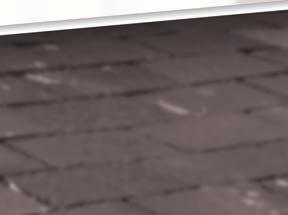
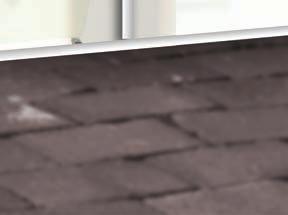




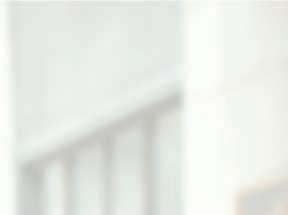

you are having trouble maintaining profits, 24/7 Express can help you gain more revenue without increasing your opera�ng costs. Customers can drop off or pick up at any hour at a secure 24/7 Express kiosk.
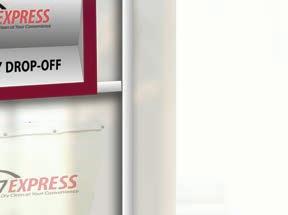


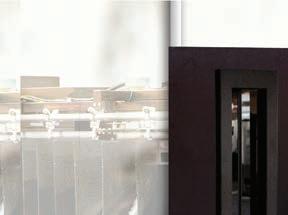
Headquartered in Mishawaka, Indiana, Ziker Clean ers and Uniforms at one time had 55 stores in two states. Over the years, the company has scaled back to eight drop locations and a central plant. “We need to understand the market, our position in the market and how our overall strategy affects our location strategies,” says President David Ziker (inset). (Photo: Ziker Cleaners and Uniforms)
are many things to consider that require surgical research and evaluation. Mistakes can be fatal. In the drycleaning industry today, our businesses are very fragile.”
It’s also vital, when a cleaner expands to a certain point, to determine how many storefronts a drycleaning business actually needs.
“Every dry cleaner’s situation is unique,” Ziker says. “As the market leader in our area, we are finding that we have oversaturated locations that cannibalize sales from one location to the other. We also are keeping track of how neighborhoods and traffic flow changes over time. This year, we have permanently closed two locations, merging them to nearby stores and converting customers to home pickup and delivery.”
One development that many business owners are keeping an eye on is the increased availability of retail space due to the shuttering of many small businesses in the wake of COVID-19. Ziker recognizes this potential opportunity but remains cautious.
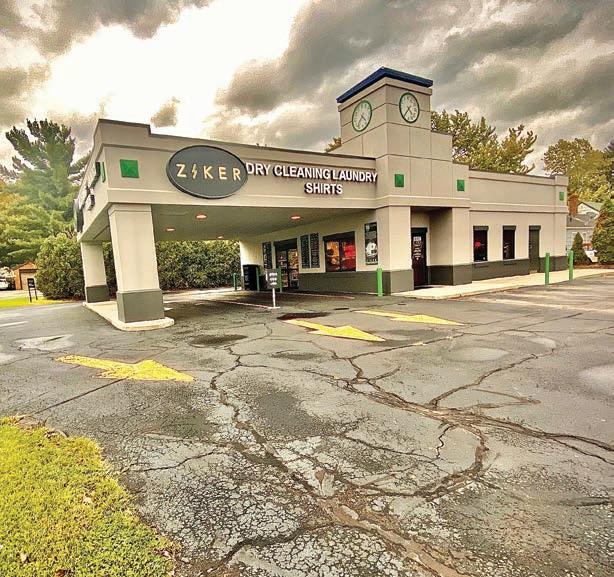
“We are shrinking our brick-and-mortar footprint because our customers are finding us where we are,” he says. “I do believe that retail properties will become more available and more financially interesting due to business closings. For us to open a brand-new location in these times for our business, however, it would have to be an amazing opportunity.”
strongly that this is a new reality that will not revert.”
Other consumer habits, fueled by the convenience of online shopping and home delivery, have also altered the market’s landscape during Ziker’s career. “Amazon, Grubhub, Uber and other companies have trained the consumer to expect greater convenience. This is something that successful cleaners must adapt to. However, the old standard considerations on finding a new location still apply; high traffic areas and being nearby dense, upper-middle-class homes are critical.”
As communities evolve, a store in what was once a prestigious location can find itself in a now-run-down part of town. These are the times when owners must ask themselves if they should stick it out at the present location or look for greener pastures. Ziker’s company operates a central plant that does same-day services for the cleaner’s stores, so the placement of its drop stores is something that leadership constantly evaluates.
“We operate ‘dry’ stores, so moving is not a challenge like relocating an operating facility would be,” Ziker says. “The obvious challenges are leases and finances. There
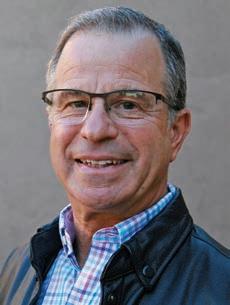
One question that every retail business owner has to answer is, “Do I lease a property, or do I buy it?” Their answer can depend on a multitude of factors, including the demographics of the area, the kind of facility they want to create, property values and other issues. Ultimately, the cleaner has to weigh all the evidence and then make a decision they feel they can live with.
“The old metric of keeping rent at 10% of sales is getting harder and harder,” Ziker says. “The decision to lease or develop property yourself is critical. The terms and the financing that relate to the forecasted sales volumes all must be closely evaluated.”
“I would only lease space for drop stores,” Mitchell says, “as I want to make sure they can be easily relocated in the event the anchor store of the strip mall moves away. Of course, that comes after determining which area I needed to put the store when I studied demographics and competition.”
Zeck says he is glad he purchased the land for his Texas plant. “Our location was not inexpensive, but considering that we were building a home for a family-owned and -managed plant, we think the purchase of our own real estate was the most important decision we made,” he says. “We have no regrets.”



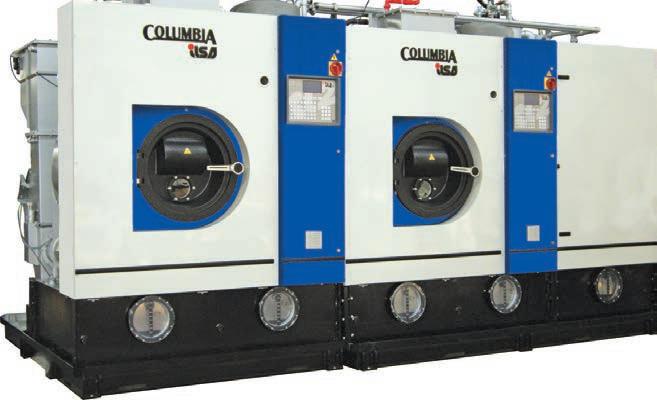

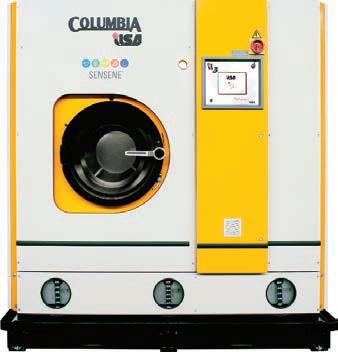

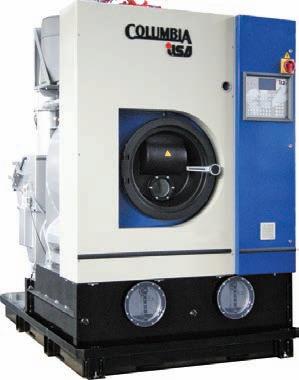




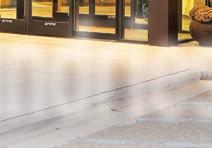






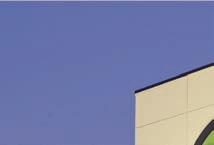 By Haley Jorgensen
By Haley Jorgensen
Agrowing number of dry cleaners today are looking to ramp up revenue, decrease overhead costs, and diversify and secure their businesses to better protect them from economic downturns. Some dry cleaners are investing in vended laundries — essential businesses — to achieve these goals. In this article, three experienced drycleaning operators weigh in on vended laundry’s value.
Owned by David Machesney, Pratt Abbott Garment Care, based in Westbrook, Maine, is the state’s largest provider of drycleaning, vended laundry and linen/ uniform rental services. Pratt Abbott’s vended laundry sector significantly contributes to the success of the company as a whole, gleaning similar profits to dry cleaning, according to Machesney. In many ways, the two intertwine. This is partly because most Pratt Abbott vended laundries and drycleaning stores are located side-by-side (eight of Pratt Abbott’s 12 locations include vended laundries). This configuration draws revenue from a broader demographic, creates shared operational savings and encourages consumer crossover.
“We look at it as a convenience to the customer and a way to serve more customers,” Machesney says of the vended side of his business. “Co-mingling also allows

(Above) Sheldon Cleaners, located in Kentwood, Michigan, has 25 drycleaning retail locations, but its crown jewel is The Laundry Café, which offers customers several options when it comes to cleaning while providing the company with various income generators. (Photo: Continental Girbau)


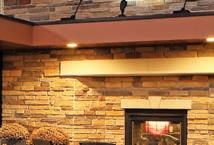

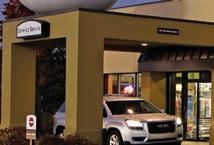


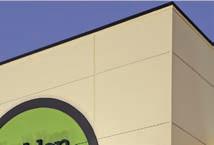
us to run fully attended laundries and offset some of the labor cost from drycleaning revenue.”




Sheldon Cleaners, in Kentwood, Michigan, operates from a similar platform. The company umbrellas a 32,000-square-foot drycleaning plant; 25 satellite drycleaning retail locations; a 6,500-square-foot, high-speed vended laundry called The Laundry Café; and a coffee and crêperie inside the laundry. Revenue flows from various income generators, including dry cleaning, selfservice laundry, wash/dry/fold, and food and coffee.
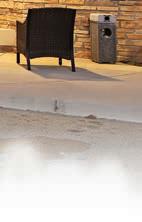
The Laundry Café — developed in 2017 with highspeed Continental ExpressWash and ExpressDry equipment — gave the company the space and machine capacity to launch wash/dry/fold service, according to






General Manager Jeff Engle. It also immediately spurred an unexpected 30% surge in over-the-counter drycleaning sales at that location.
Not only has that vended laundry created another source of income at Sheldon Cleaners’ main plant location, but it’s also acted as a safety net — protecting the company as a whole from economic fluctuations, according to Engle. This includes COVID-19.
“The more Laundromats you have, the more secure the business,” he says. “The Laundry Café was not impacted by the COVID-19 pandemic, whereas our drycleaning side was drastically affected. Our business platform moving forward includes developing more vended laundries,” he adds.
In Montgomery, Alabama, Jim Massey’s Cleaners & Laundry realized the same benefits. Owner Jim Massey, who has been in the drycleaning business since 1941, constructed his first vended laundry six years ago.
“During the pandemic, vended sales were up 10-15%,” he says. “On the retail drycleaning side, sales were initially down 72%, but have rebounded somewhat lately and are now down 28%. From that standpoint alone, I’d much rather have lots of vended laundries,” he says.
To prove that point, Massey has a second vended laundry in the works. “If something can be cleaned, why wouldn’t we capitalize on the fact that we can clean anything?” he asks. “Vended laundries allow us to grow revenue without growing outside a 90-mile radius.”
While Jim Massey’s Cleaners and Sheldon Cleaners are somewhat new to the vended game, Pratt Abbott isn’t. Machesney understands full well how his eight vended laundries contribute to overall company success: “The vended helps,” he says. “During this pandemic, vended laundry and home delivery saved us. Our dry cleaning and uniform rental were basically shut down for a while.”
But vended laundries don’t just shine during pandemics. They are constant revenue generators that allow drycleaning operators to offer a complete cleaning package to customers. Moreover, vended laundries help spur new and additional drycleaning sales, while providing the space needed to offer wash/dry/fold service. It’s a smart combination, according to Massey, Machesney and Engle.
How smart? “We have 275,000 people in our market,” says Machesney. “It’s not big, so having both dry cleaning and vended allows Pratt Abbott to grab 75% of the
CITRAZYME One-shot, powdered laundry detergent containing enzymes, oxygen bleach, and citrus degreaser.
NAPTHOL-T Powdered laundry detergent formulated to clean dark-colored shirts in cold water temperatures.
MEGA BRYTE One-shot, powdered laundry detergent that contains non-phosphate water conditioners.
CITRASOL Concentrated citrus-based liquid degreaser additive for oil and grease stain removal.
STAND UP Advanced synthetic liquid starch for shirts and denim designed to provide significant body and rigidity.
AQUA VELVET Eco-friendly one-shot wet-cleaning detergent with stain removers and conditioners. This product is EPA Safer Choice certified.
SHOT-SPOT Versatile, all-purpose stain remover.
ACTIVATE Color-safe oxygen bleaching agent blend containing a lowtemperature catalyst.
HYDROCON Eco-friendly fabric conditioner and retexturizing agent with optical brightener. This product is EPA Safer Choice certified.
LS-100 Synthetic liquid sizing and natural corn starch blend.




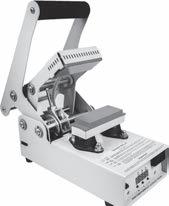

drycleaning market and half the vended market.”

On the whole, vended laundries make the drycleaning stores more profitable — and vice versa. The pairing creates “one-stop-shop” customer convenience, according to Machesney. That’s important, he says, because Pratt Abbott is “in the business of selling time.”
That’s the same reason Sheldon Cleaners intends to open more Laundromats soon. “Our combo laundries and drycleaning stores will be flagship destinations where customers can enjoy multiple cleaning services, as well as benefiting from residential pickup and delivery,” says Engle.
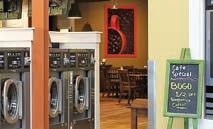
But, Engle, Machesney and Massey warn that it’s important to develop vended laundries that stand apart from the competition and offer customer convenience. A good place to start, they agree, is with high-speed equipment.


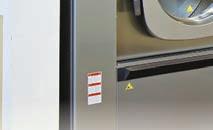

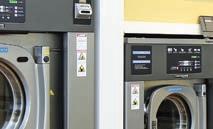
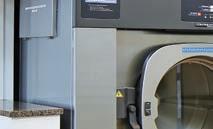
During the last decade, Machesney has renovated several vended laundries to enjoy per-store revenue bumps of 10-30% and utility cost savings of 50%. He enhances two stores per year and starts by replacing hard-mount machines with soft-mount Continental washers and dryers.


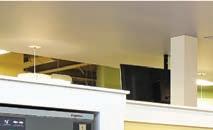

“At many of our acquired stores, utility costs consumed 40% of revenue,” Machesney says. “Now, because of the new equipment, we’ve got that down to 18 to 20%.” The soft-mount, high-speed equipment also ensures customers can complete laundry in less than 60 minutes, he adds.
Machesney’s most profitable vended laundry is Pratt Abbott’s Express Laundry Center, a 4,200-square-foot store with 72 machines in Windham, Maine. It’s equipped with high-speed ExpressWash washers, a Laundry Boss payment system that allows customers to pay with a mobile device, and a San-O3-wash ozone system. The latter injects ozone gas into accompanying washers to sanitize
customers’ laundry and eradicate bacteria and viruses.
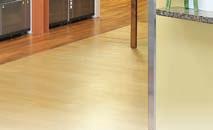

“It’s another level of protection,” says Machesney. “We also have a few larger washers with Express Clean chemical injection, which automatically dispenses specially formulated detergents, brighteners and softeners so customers don’t have to lug and load detergents.”
Focused on providing that same customer convenience and peace-of-mind, Massey’s new laundry will be a high-speed, soft-mount store equipped with ExpressWash and ExpressDry equipment, ozone sanitization and automatic chemical injection.
“We have soft-mount washers in the drycleaning plant and love them for their high extract speeds, less water retention and low maintenance,” he says. The washers that will soon be installed in Massey’s new vended laundry produce speeds of up to 400 G-force, remove significantly more moisture than comparable hard-mount washers and allow customers to complete laundry in less than an hour.


At the end of the day, according to Machesney, Massey and Engle, vended laundries mix perfectly with drycleaning operations. Not only do they create a second profit center, but vended laundries also offer needed space to launch wash/dry/fold services, help improve over-the-counter drycleaning sales, and provide stability during economic downturns. When developed correctly — to stand apart from the competition — vended laundries typically become reliably profitable.
“If we weren’t happy with the return of our first vended laundry, we wouldn’t be looking to develop a second one,” says Engle.
The Parker Boiler tube bundle is extremely flexible and offers a long life with a 25 year warranty against thermal shock.
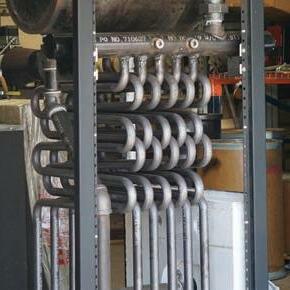
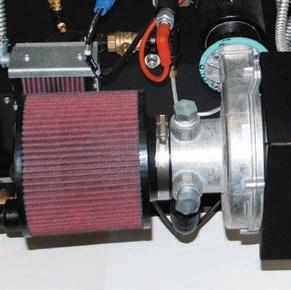

Each unit is Factory Assembled & Fire Tested. 4 years of Field Testing.
Extra heavy boiler tubes 1-5/16” OD. minimum 0.12” (11GA) heavy thickness steel, built for long term service life.

5:1 Burner Turndown Ratio. Digital Pressure Control. Boilers require access on two sides only. Reflex Prismatic Sight Glass. Up to 4” of insulation and 1/2” thick steam drum.


